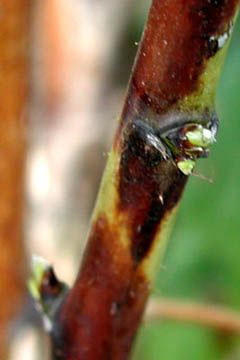Several fungi cause canker diseases of raspberries and blackberries. Early symptoms of these diseases may include unusually colored, spotted or necrotic areas on canes, frequently centered around buds. Individual laterals may wilt when canes are completely girdled by cankers.
The three most commonly encountered canker diseases are:
Anthracnose is most common on black raspberry, red raspberry and occasionally blackberry. Symptoms of this fungal disease (Elsinoe veneta) are most obvious on canes but may also occur on leaves and fruit.
Leaf symptoms of anthracnose are described on this webpage.
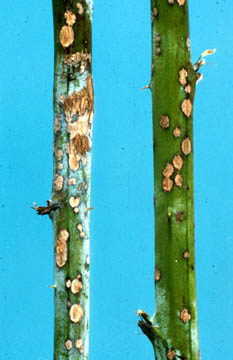
These later become sunken buff to ash gray spots with dark margins.
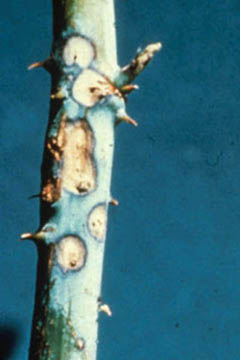
More raspberry canker disease information.
Cane Blight – First described in NY in 1902, this fungal cane disease (Leptosphaeria coniothyrium) affecting raspberry and blackberry is usually associated with wounds. Infected primocanes do not show obvious signs of infection during late fall. The following spring cankers may have moved up and down the cane causing the death of axillary buds or wilt of lateral shoots. Girdled canes may wilt and die suddenly in late spring or summer. Infected canes are weakened and often snap off at the point of infection.
The bark of infected canes often turns silver in spring of the second year of infection. These silver patches may become covered with dark gray masses of spores. Such symptoms are commonly seen on stubs of old fruiting canes left after pruning.

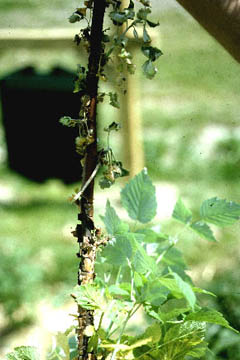
More raspberry canker disease information.
Spur blight (Didymella applanata) fungus infects fruiting laterals of red and black raspberries, and blackberries, especially on the lower portion of canes where conditions are more favorable for disease development.
Individual laterals wilt, and at the base of the lateral is a brown or black lesion.
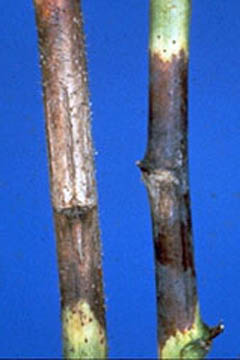
Infections can occur on primocanes as well, as indicated by lesions that already exist surrounding the dormant buds.
